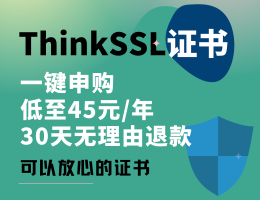本系列所有文章可以在这里查看[http://blog.csdn.net/cloud_castle/article/category/2123873](http://blog.csdn.net/cloud_castle/article/category/2123873)
接上文[Qt5官方demo解析集18——Chapter 4: Using Custom Property Types](http://blog.csdn.net/cloud_castle/article/details/36896525)
上个例子向我们展示了如何为QML调用的C++类型添加自定义类型的属性,在这个例子中我们更进一步,将这个类型更换为一个PieSlice的列表,以此得到更丰富的处理能力。
项目文件与上个例子是一样的。
还是先看看piechart.h:
~~~
#ifndef PIECHART_H
#define PIECHART_H
#include <QtQuick/QQuickItem>
class PieSlice; // 由于这里只使用了PieSlice的指针,我们可以使用前向声明
//![0]
class PieChart : public QQuickItem
{
Q_OBJECT
Q_PROPERTY(QQmlListProperty<PieSlice> slices READ slices) // 我们使用QQmlListProperty<PieSlice>来定义slices属性的类型
//![0] // 该属性是一个PieSlice的列表,而QQmlListProperty则为我们提供了在QML中扩充该列表成员的能力
Q_PROPERTY(QString name READ name WRITE setName) // 由于QQmlListProperty的机制,即使我们没有定义该属性的WRITE功能,它也是可改变的
//![1]
public:
//![1]
PieChart(QQuickItem *parent = 0);
QString name() const;
void setName(const QString &name);
//![2]
QQmlListProperty<PieSlice> slices(); // 我们在属性中仅仅定义了可读性,因此这里并没有声明setSlices()函数
private:
static void append_slice(QQmlListProperty<PieSlice> *list, PieSlice *slice); // 一个向向列表中添加属性成员的函数
QString m_name;
QList<PieSlice *> m_slices; // 定义一个对应的数据成员
};
//![2]
#endif
~~~
piechart.cpp:
~~~
#include "piechart.h"
#include "pieslice.h"
PieChart::PieChart(QQuickItem *parent)
: QQuickItem(parent)
{
}
QString PieChart::name() const
{
return m_name;
}
void PieChart::setName(const QString &name)
{
m_name = name;
}
//![0]
QQmlListProperty<PieSlice> PieChart::slices() // 用来返回列表中的属性
{
return QQmlListProperty<PieSlice>(this, 0, &PieChart::append_slice, 0, 0, 0); // 该函数原型如下图
}
void PieChart::append_slice(QQmlListProperty<PieSlice> *list, PieSlice *slice) // 每当我们向slices中添加一个PieSlice都会调用这个静态的内部函数
{
PieChart *chart = qobject_cast<PieChart *>(list->object); // 取得列表的父对象
if (chart) { // 并设置为新属性成员的父对象
slice->setParentItem(chart);
chart->m_slices.append(slice);
}
}
//![0]
~~~

pieslice.h:
~~~
#ifndef PIESLICE_H
#define PIESLICE_H
#include <QtQuick/QQuickPaintedItem>
#include <QColor>
//![0]
class PieSlice : public QQuickPaintedItem
{
Q_OBJECT
Q_PROPERTY(QColor color READ color WRITE setColor)
Q_PROPERTY(int fromAngle READ fromAngle WRITE setFromAngle) // 添加了扇形的起始角与角度范围属性
Q_PROPERTY(int angleSpan READ angleSpan WRITE setAngleSpan) // 用来绘制饼状图的多个扇形的不同颜色
//![0]
public:
PieSlice(QQuickItem *parent = 0);
QColor color() const;
void setColor(const QColor &color);
int fromAngle() const;
void setFromAngle(int angle);
int angleSpan() const;
void setAngleSpan(int span);
void paint(QPainter *painter);
private:
QColor m_color;
int m_fromAngle; // 注意与定义的属性类型对应
int m_angleSpan;
};
#endif
~~~
pieslice.cpp:
~~~
#include "pieslice.h"
#include <QPainter>
PieSlice::PieSlice(QQuickItem *parent)
: QQuickPaintedItem(parent)
{
}
QColor PieSlice::color() const
{
return m_color;
}
void PieSlice::setColor(const QColor &color)
{
m_color = color;
}
int PieSlice::fromAngle() const
{
return m_fromAngle;
}
void PieSlice::setFromAngle(int angle)
{
m_fromAngle = angle;
}
int PieSlice::angleSpan() const
{
return m_angleSpan;
}
void PieSlice::setAngleSpan(int angle)
{
m_angleSpan = angle;
}
void PieSlice::paint(QPainter *painter)
{
QPen pen(m_color, 2);
painter->setPen(pen);
painter->setRenderHints(QPainter::Antialiasing, true);
painter->drawPie(boundingRect().adjusted(1, 1, -1, -1), m_fromAngle * 16, m_angleSpan * 16);
}
~~~
app.qml:
~~~
import Charts 1.0
import QtQuick 2.0
Item {
width: 300; height: 200
PieChart {
anchors.centerIn: parent
width: 100; height: 100
slices: [ // 使用中括号括起列表中的成员
PieSlice {
anchors.fill: parent
color: "red"
fromAngle: 0; angleSpan: 110
},
PieSlice {
anchors.fill: parent
color: "black"
fromAngle: 110; angleSpan: 50
},
PieSlice {
anchors.fill: parent
color: "blue"
fromAngle: 160; angleSpan: 100
}
]
}
}
~~~
运行效果如下:

- 前言
- 1——Fortune Server/Client
- 2——Multicast Sender/Receiverz
- 3——Broadcast Sender/Receiver
- 4——Blocking Fortune Client
- 5——Threaded Fortune Server
- 5(总结)——Fortune例程的各个实现区别
- 6——Loopback Example
- 7——Analog Clock Example
- 8——Shaped Clock Example
- 9——Analog Clock Window Example
- 10——Qt Quick Particles Examples - Emitters
- 11——Qt Quick Particles Examples - Affectors
- 12——Qt Quick Particles Examples - CustomParticles
- 13——Qt Quick Particles Examples - Image Particles
- 14——Qt Quick Particles Examples - System
- 15——Chapter 1: Creating a New Type
- 16——Chapter 2: Connecting to C++ Methods and Signals
- 17——Chapter 3: Adding Property Bindings
- 18——Chapter 4: Using Custom Property Types
- 19——Chapter 5: Using List Property Types
- 20——Chapter 6: Writing an Extension Plugin
- 21——Extending QML - Adding Types Example
- 22——Extending QML - Object and List Property Types Example
- 23——Extending QML - Inheritance and Coercion Example
- 24——Extending QML - Default Property Example
- 25——Extending QML - Methods Example
- 26——Extending QML - Grouped Properties Example
- 27——Extending QML - Attached Properties Example
- 28——Extending QML - Signal Support Example
- 29——Extending QML - Property Value Source Example
- 30——Extending QML - Binding Example
- 31——StocQt
- 32——Qt Quick Examples - Threading
- 33——Qt Quick Examples - Window and Screen
- 34——Concentric Circles Example
- 35——Music Player
- 36——Wiggly Example
- 37——Vector Deformation
